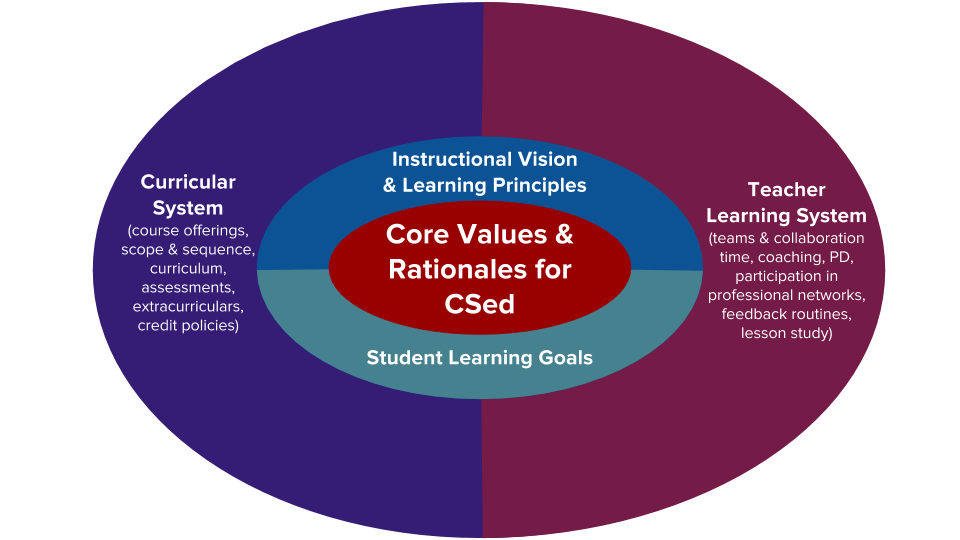How do educational values translate into educational systems? This is a key question for anyone that cares about education generally, and it is also critical for those that are interested in bringing equitable computer science into K12 school systems. Values around the importance of computer science education should be reflected in decisions about things like curriculum, professional development, after school opportunities, community partnerships, and more. But what does it take to make this happen? What does it look like when school districts achieve this, and what gets in the way?
In the project CS Visions Research-Practice Partnership: Building Multi-level Alignment in Local CSforALL Implementations for Sustainability partners from CSforALL and UC-Irvine aim to understand and support district-level computer science strategic planning and implementation that coordinate vision, implementation, and curriculum decisions.
The project’s goals include:
- Design and pilot visioning, decision-making, and implementation routines that can provide an integrated toolkit for facilitating K12 school and district decision making around CSforALL implementation.
- Develop a set of practical measures that can provide fast, formative metrics for districts and schools to evaluate the alignment and implementation of their CSforALL initiatives over time.
- Conduct research on K12 district decision-making and implementation processes to generate scholarly insights about enable more nuanced and robust CSforALL implementations at the local level.
As a research-practice partnership, the project approach aims to focus on problems of practice as articulated by both partners as well as CSforALL as an organization that supports practitioners, and at the same time produce foundational research that helps drive the broader field of computer science education forward.
Design Approach
The project partners with sixteen school districts, along with supporting educational cooperatives in their regions, to help them develop local CSforALL initiatives for their students. This involves supporting districts to:
- Develop visions – Our starting point in partnering with districts is supporting them to set north stars based on their own values and their own community needs. This means that each district begins their planning work by first answering a critical question: CS for what? Building off of the CS Visions framework (Vogel, Santo & Ching, 2017), districts identify their core values around CS education that can be used these to guide decision-making about instruction and systems change.
- Develop implementation goals – In planning for rigorous and sustainable CSforALL initiatives, districts need to consider actions across their school systems. We use the CSforALL SCRIPT rubrics to help districts set short and medium-term goals in areas like curriculum, leadership, and professional learning.
- Develop improvement measures – this project draws on a larger approach of continuous improvement, which focused on the importance of “seeing the system” that you’re trying to improve, and using targeted, easy to collect data to know whether the needle is moving in the right direction around those goals. We work with our district partners to develop, implement and make sense of data coming from these sorts of practical measures.
Research Approach

The project’s research is rooted in theories of Instructional Systems Coherence. Having a coherent instructional system essentially means aligning the major parts of a school or district’s activities — professional development, coaching, curriculum, learning goals, rationale, instructional vision, etc. — in relation to one another (see Newmann et al., 2011, Forman et al., 2017, and Cobb & Jackson, 2011 below for more). For example, the learning goals for courses in one grade level should prepare students for courses in the next, the selected professional development should focus on the learning goals and instructional approaches that are most valued, or even something like an after-school club should actually reflect and help reinforce the instructional vision at the heart of the effort.
The questions that guide our research are:
- How did the design of our visioning, implementation decision, and practical measurement strategies influence how district partners planned, made decisions on, and ultimately implemented their CS education plans?
- What types of visions, implementation, and practical measurement needs arose for district teams?
- What types of data and tools—including the practical measures developed in this project—were helpful for districts to continually evaluate and evolve their CS implementations?
Resources

